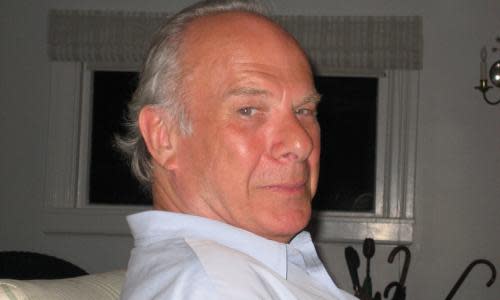John Heilpern obituary

John Heilpern, who has died aged 78 of lung cancer, was a feature writer on the Observer for 10 years before moving to New York in the late 1970s. But it is for two of the most brilliant and important theatre books of our time that he will be remembered: Conference of the Birds: The Story of Peter Brook in Africa (1977) and John Osborne: A Patriot for Us (2006).
In the first, he travelled with Brook’s international company, based in Paris, on a voyage of self-discovery and investigation into the roots of theatre across the Sahara, improvising and interacting with villagers and tribal people they met in six countries (Algeria, Niger, Nigeria, Benin, Togo and Mali), culminating in an experimental version of the great Persian allegorical poem devised by Ted Hughes.
The Conference of the Birds is a quest ending in the discovery that what you seek is on your doorstep. Mecca is wherever you are in a poem Heilpern calls “the Catch-22 of Islam”. Brook himself was moving from a life in the conventional theatre to one starting from scratch, beyond boundaries of race, nationhood, cultural fixed points and even, Heilpern concludes, his own identity.
The book’s portraits of the 11 actors, who include Helen Mirren and Bruce Myers, and its account of theatrical awakening, create a witty and unpretentious document of a pivotal moment in world theatre. The experience had a sobering effect on the usually noisy, sardonic and larger-than-life Heilpern, who relished the metropolitan world of newspapers, restaurants and showbusiness.
More of all that emerged in his Osborne biography, an equally illuminating but less emotionally constrained work, authorised by the playwright’s widow and fifth wife, Helen Dawson – a friend and colleague on the Observer. Heilpern produced “a sympathetic biography of an unsympathetic man”, said the commentator Ian Jack; Osborne was a gloriously funny and uncompromising writer who was nonetheless a poor friend, a bad son and husband, and an even worse father, who disowned his own daughter.
And yet, on every page are insights and delights, jokes and good-time bad behaviour, with Osborne and Dawson luring Heilpern in New York to the Blue Bar of the Algonquin, where they drink so much champagne that the journalist, no lightweight in the drinking stakes, has to go to bed for two days. He is great on the work itself, in a robust, convincing defence of the groundbreaking Look Back in Anger before the bloodless, politically correct revisionists got to work in the past decade or so. As a writer of zest, erudition and verbal felicity, he compares only to Kenneth Tynan and John Lahr.
Born in Manchester, John was the younger son of Maurice Heilpern, a bookmaker, and his wife, Rachel (nee Berkovitch). He was educated at the city’s Stand grammar school (other old boys include Clive of India and Howard Jacobson) and Hertford College, Oxford, where he took a law degree before joining the Observer in 1966. Under the editorship of David Astor, he often occupied the Review front with stunning profiles of such titans as Graham Greene, Noël Coward, Vanessa Redgrave, Rudolf Nureyev and the Who.
Best of all, perhaps, was an interview he conducted over lunch in a restaurant with John Gielgud and Ralph Richardson as they prepared to transfer with Harold Pinter’s No Man’s Land to the West End in 1977. The piece dangerously adopted the format of a short comic play, complete with descriptive stage directions. Such attempts usually founder, but Heilpern carried it off triumphantly, not least thanks to the eccentricity of Richardson and the silken, memorial charm of Gielgud.
At this high point in his career, Heilpern left the Observer (Astor’s departure signalled the end of an era) and worked for a year as a dramaturg and assistant to Peter Hall as he opened the new National Theatre on the South Bank. Heilpern was most directly involved in Hall’s fine 1976 revival of Christopher Marlowe’s Tamburlaine, starring Albert Finney. He then went to New York with his second wife, the Vogue and Vanity Fair journalist Joan Juliet Buck.
There he wrote a weekly column for the Times edited by Harold Evans, and launched a weekly theatre column in the New York Observer (no relation to its London namesake). In this he often practised criticism as a polemic: an early pre-emptive strike at objections to colour-blind casting, or a spoof awards ceremony satirising the New York Times critic Ben Brantley, with a body-parts award category in that critic’s name after Brantley had commented on one actor’s genitalia and (in a different play) Eileen Atkins’ right leg.
As well as the Brook and Osborne tomes, he edited in 1979 a posthumous publication of the Observer journalist John Gale’s last novel, Camera Man; supplied a delicious introduction to the photographs of William Klein; and published a riotous collection of his journalism, How Good is David Mamet, Anyway? (2000).
Heilpern was married three times: to the theatre and film costume designer Ruth Myers (1968-77); to Buck (1977-86); and to the architectural historian Sydney Weinberg, whom he met in 1995 and thereafter described as his life partner – they married in 2016. The first two marriages ended in divorce.
He is survived by Sydney, a daughter, Rachel, from his first marriage, a granddaughter, Keira May, and a brother, Jeffrey.
• John David Heilpern, writer, journalist and theatre critic, born 3 April 1942; died 7 January 2021

